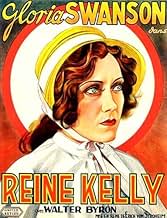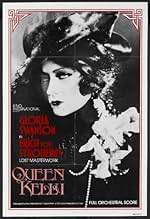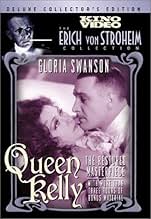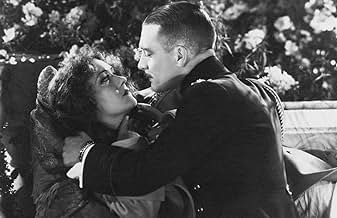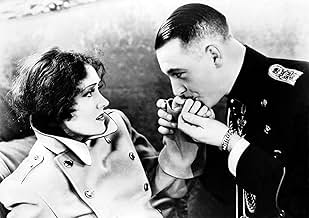IMDb RATING
7.1/10
3.4K
YOUR RATING
A convent girl is abducted and seduced by a prince before being sent off to a brothel in East Africa.A convent girl is abducted and seduced by a prince before being sent off to a brothel in East Africa.A convent girl is abducted and seduced by a prince before being sent off to a brothel in East Africa.
- Directors
- Writers
- Stars
- Awards
- 1 win total
Sylvia Ashton
- Kelly's Aunt
- (uncredited)
Wilson Benge
- Prince Wolfram's Valet
- (uncredited)
Sidney Bracey
- Prince Wolfram's Lackey
- (uncredited)
Rae Daggett
- Coughdrops
- (uncredited)
Robert Frazier
- Catholic Priest
- (uncredited)
Florence Gibson
- Kelly's Aunt
- (uncredited)
Madge Hunt
- Mother Superior
- (uncredited)
Tully Marshall
- Jan Vryheid
- (uncredited)
Ann Morgan
- Maid Escorting Kelly to Altar
- (uncredited)
Madame Sul-Te-Wan
- Kali Sana - Aunt's Cook
- (uncredited)
Lucille Van Lent
- Prince Wolfram's Maid
- (uncredited)
Wilhelm von Brincken
- Prince Wolfram's Adjutant
- (uncredited)
Gordon Westcott
- Lackey
- (uncredited)
- Directors
- Writers
- All cast & crew
- Production, box office & more at IMDbPro
Featured reviews
This is Director Eric Von Stroheim's last film, produced by it's star, Gloria Swanson. There is much to be learned from the commentaries and additional features on the deluxe Kino DVD of this silent film. The film itself is a wonderful lesson in film-making of its period. Von Stroheim loved to take shots of all the props and costume details of a character believing that this focus on detail told you more about the character than the actor alone could convey. This technique was later perfected by Hitchcock, where details shots are followed by reaction shots to move the story and emotional life along.
QUEEN KELLY is the story of a convent girl who falls in love with a dissipated prince who is promised to a debauched Queen. By today's standard, Seena Owen's performance as the queen is laughably over the top; she slithers and glowers and when she's really angry, she seems to have something stuck in her eye. Swanson herself was the prototype of today's tiny body, big head build favored in television. In her long shots her build looks almost like a pygmy, especially in comparison to Owen. But Swanson has that riveting face, and remains really a fine actress. The interview sections done as introductions to a television viewing of QUEEN KELLY show her to have retained those gorgeous and expressive eyes. This was considered her last film as a real ingénue - she was a bit long in the tooth to be playing a convent girl - but that was the style, bless them.
The original story was only about 1/3 completed when the production went way over budget and delved into areas that would never be approved by censors. Arguably, given Seena Owen's almost 100% nude (wearing either chiffon negligee, or a strategically held cat) performance, most of it may not have passed censors.
The restoration makes much ado of finding reels from the abandoned "African brothel" sequences, but when all is said and done, the "Swanson Ending" (the only way it was shown after talkies had come in and silents were pretty much a done thing) is a very serviceable and good ending evoking Shakespearian tragedy. Most silents were big on action, short on story, with fairly simple plots. Granted the original was supposed to have a happy, if rather suspicious, happy ending, but this makes total sense, and makes Queen Kelly seem very complete.
The only real loss of the Swanson ending is losing the believably sick (in both senses of the word) performance of Tully Marshall. Between Owen and Marshall, it is a lesson in why the production "code of decency" was developed in the first place. The irony is that, as much as she may have been considered heavy handed or intrusive for firing Von Stoheim, Swanson's ending demonstrates that Swanson really did know what she was doing as a producer. A memorable and informative trip into film history.
If you're not interested in film history or silent film, skip it.
QUEEN KELLY is the story of a convent girl who falls in love with a dissipated prince who is promised to a debauched Queen. By today's standard, Seena Owen's performance as the queen is laughably over the top; she slithers and glowers and when she's really angry, she seems to have something stuck in her eye. Swanson herself was the prototype of today's tiny body, big head build favored in television. In her long shots her build looks almost like a pygmy, especially in comparison to Owen. But Swanson has that riveting face, and remains really a fine actress. The interview sections done as introductions to a television viewing of QUEEN KELLY show her to have retained those gorgeous and expressive eyes. This was considered her last film as a real ingénue - she was a bit long in the tooth to be playing a convent girl - but that was the style, bless them.
The original story was only about 1/3 completed when the production went way over budget and delved into areas that would never be approved by censors. Arguably, given Seena Owen's almost 100% nude (wearing either chiffon negligee, or a strategically held cat) performance, most of it may not have passed censors.
The restoration makes much ado of finding reels from the abandoned "African brothel" sequences, but when all is said and done, the "Swanson Ending" (the only way it was shown after talkies had come in and silents were pretty much a done thing) is a very serviceable and good ending evoking Shakespearian tragedy. Most silents were big on action, short on story, with fairly simple plots. Granted the original was supposed to have a happy, if rather suspicious, happy ending, but this makes total sense, and makes Queen Kelly seem very complete.
The only real loss of the Swanson ending is losing the believably sick (in both senses of the word) performance of Tully Marshall. Between Owen and Marshall, it is a lesson in why the production "code of decency" was developed in the first place. The irony is that, as much as she may have been considered heavy handed or intrusive for firing Von Stoheim, Swanson's ending demonstrates that Swanson really did know what she was doing as a producer. A memorable and informative trip into film history.
If you're not interested in film history or silent film, skip it.
Erich von Stroheim's infamous final stab at direction (unfinished, when the plug was pulled by producer and star Gloria Swanson) is a sophisticated piece of silent cinema, wrapped in a camp plot and looking fabulous.
Gloria Swanson plays Patricia Kelly, a convent girl who meets the Prince of her dreams ('wild' Wolfram, played by Walter Byron) while she is out with the nuns. After a risqué scene concerning the soldiers and her bloomers, Gloria prays to the Holy Virgin to let her see the Prince again, while the Prince feels trapped in his engagement to the mad Queen Regina (a scene-chewing Seena Owen).
The first half of the film concerns how 'Kelly' and Wolfram come to meet up again, this time in the Palace where the jealous Queen loses no time in whipping Kelly out of doors and roaring that the Prince is 'Mine, MINE, MINE!'. The second half (unfinished) concerns Kelly's fortunes thereafter, called by her dying aunt to Africa where she finds herself in a brothel and betrothed to loathsome cripple drunk Jan Vryheid (a repellent and compelling performance from Tully Marshall), and eventually (and improbably) turns the situation round to get her happy ending, 'Queen Kelly' again.
Gloria Swanson looks absolutely gorgeous in the shimmering black and white close-ups, and her acting as Kelly is impeccable throughout - no one made better use of the 'look of horror' or the 'dipping of eyelashes' or the 'flirty smile'. Walter Byron is a moustachioed hero in the mould of John Gilbert and is an amusing second lead.
With the gaps plugged by wordy slides (in some prints, Kelly becomes Kitty in these explanatory bits, but never mind ...) and still photographs, 'Queen Kelly' is a boisterous and worthy final feature for its director. Many have seen a small bit of this film as part of Norma Desmond's home projections in 'Sunset Boulevard', but try to see the full thing - hugely enjoyable, and if not as mushily romantic as 'The Wedding March', its satirical splendor more than makes up for it!
Gloria Swanson plays Patricia Kelly, a convent girl who meets the Prince of her dreams ('wild' Wolfram, played by Walter Byron) while she is out with the nuns. After a risqué scene concerning the soldiers and her bloomers, Gloria prays to the Holy Virgin to let her see the Prince again, while the Prince feels trapped in his engagement to the mad Queen Regina (a scene-chewing Seena Owen).
The first half of the film concerns how 'Kelly' and Wolfram come to meet up again, this time in the Palace where the jealous Queen loses no time in whipping Kelly out of doors and roaring that the Prince is 'Mine, MINE, MINE!'. The second half (unfinished) concerns Kelly's fortunes thereafter, called by her dying aunt to Africa where she finds herself in a brothel and betrothed to loathsome cripple drunk Jan Vryheid (a repellent and compelling performance from Tully Marshall), and eventually (and improbably) turns the situation round to get her happy ending, 'Queen Kelly' again.
Gloria Swanson looks absolutely gorgeous in the shimmering black and white close-ups, and her acting as Kelly is impeccable throughout - no one made better use of the 'look of horror' or the 'dipping of eyelashes' or the 'flirty smile'. Walter Byron is a moustachioed hero in the mould of John Gilbert and is an amusing second lead.
With the gaps plugged by wordy slides (in some prints, Kelly becomes Kitty in these explanatory bits, but never mind ...) and still photographs, 'Queen Kelly' is a boisterous and worthy final feature for its director. Many have seen a small bit of this film as part of Norma Desmond's home projections in 'Sunset Boulevard', but try to see the full thing - hugely enjoyable, and if not as mushily romantic as 'The Wedding March', its satirical splendor more than makes up for it!
My favorite Von Stroheim bio says the thing that killed this film is that it was begun smack in the middle of the industry-wide transition to sound. Swanson hired Von Stroheim for her independent producing company because she thought him the greatest director working at the time. The work continued on the film for a period under this condition: Behind the scenes, and unbeknownst to Von Stroheim, financier Joseph Kennedy and Gloria Swanson, concerned about the state of the market into which this film would be released eventually, started discussing ways to bail out the project vis a vis sound vs. silent film. They discussed adding a sound track, basically a music and effects track, after the fact; one plan was to film and insert some singing sequences to a basically silent film as The Jazz Singer had. In the end, it is supposedly Kennedy who nixed the whole thing saying no use throwing good money after bad.
Von Stroheim was troubled by this turn of events, but he didn't hate Swanson over it. Still, he did not see her or speak to her for another 21 years, and then only during the filming of Sunset Boulevard. (He despised this, probably his most high profile film role: "That damned butler role" he supposedly called it to the end of his days. He saw it as a crude burlesque, for an ignorant new generation, of a great silent director-- who just happened to be none other than Erich Von Stroheim.)
Queen Kelly shows modern viewers just how sophisticated the last silent films were visually. It is astonishing the fluid, second-nature communication that took place entirely without words. Title cards had become largely superfluous, a throwback to an earlier style of storytelling. And sound, rather than, as has so often been declared, selling out the developments in silent films, seems a natural outgrowth of these last silent years.
Von Stroheim was troubled by this turn of events, but he didn't hate Swanson over it. Still, he did not see her or speak to her for another 21 years, and then only during the filming of Sunset Boulevard. (He despised this, probably his most high profile film role: "That damned butler role" he supposedly called it to the end of his days. He saw it as a crude burlesque, for an ignorant new generation, of a great silent director-- who just happened to be none other than Erich Von Stroheim.)
Queen Kelly shows modern viewers just how sophisticated the last silent films were visually. It is astonishing the fluid, second-nature communication that took place entirely without words. Title cards had become largely superfluous, a throwback to an earlier style of storytelling. And sound, rather than, as has so often been declared, selling out the developments in silent films, seems a natural outgrowth of these last silent years.
Queen Kelly (1929)
*** (out of 4)
I think it's safe to say that von Stroheim's directing career was over when Gloria Swanson threw him a bone to direct this picture, which was originally intended to be a five-hour epic. Soon, as was always the case with the director, the thing was way over budget, he was fired and the film was never completed, although a few years later Swanson went back and filmed an alternate ending, which is included on the DVD. The film, as presented on the DVD, runs around 100-minutes and I'd say about ten-minutes are made up from stills and title cards explaining the missing footage.
The film tells the story of Kitty Kelly (Swanson), a convent girl who gets swept off her feet by Prince Wolfram (Walter Byron) but she does know that he's set to marry Queen Regina (Seena Owen) the following day. Kelly runs away in shame and finds herself in South Africa where her dying aunt turns over her brothel, which Kelly will now run. The love at first site plot isn't the most original out there but von Stroheim adds enough weirdness that makes this film worth sitting through. You can tell that this was meant to be an epic because of the 90-minutes worth of footage the first seventy-minutes are pretty much dealing with the love story. I'm guessing Kelly's rise in the brothel was originally meant to be much longer than what's shown here but I guess we'll never know as the footage is long gone and what stills are available really don't tell us too much. There are many flaws in this film but for the most part I found it very enjoyable. I thought the opening fifteen-minutes were a tad bit stiff but things really start to heat up around the thirty-minute mark. The sadistic side of von Stroheim comes through when the Queen learns that her man has been unfaithful and the whipping sequence she puts on Kelly is marvelously done and is without question one of the most beautiful shots in the director's career. You can also easily see where the budget went and the incredibly banquet scene is just a real beauty on the eyes. Swanson turns in a very good performance as she perfectly captures the spirit of the young, naive girl, although at the same time she's way too old for the part. I thought she handled the role very nicely but we never really get to see her as the brothel queen. Both Byron and especially Owen eat up their scenes and help keep the film moving. As is, QUEEN KELLY is certainly flawed but it's hard to judge the film too much simply because most of it is incomplete. The "Swanson" ending that's included on the DVD really doesn't work either so in the end we're just left with a "what if..." situation.
*** (out of 4)
I think it's safe to say that von Stroheim's directing career was over when Gloria Swanson threw him a bone to direct this picture, which was originally intended to be a five-hour epic. Soon, as was always the case with the director, the thing was way over budget, he was fired and the film was never completed, although a few years later Swanson went back and filmed an alternate ending, which is included on the DVD. The film, as presented on the DVD, runs around 100-minutes and I'd say about ten-minutes are made up from stills and title cards explaining the missing footage.
The film tells the story of Kitty Kelly (Swanson), a convent girl who gets swept off her feet by Prince Wolfram (Walter Byron) but she does know that he's set to marry Queen Regina (Seena Owen) the following day. Kelly runs away in shame and finds herself in South Africa where her dying aunt turns over her brothel, which Kelly will now run. The love at first site plot isn't the most original out there but von Stroheim adds enough weirdness that makes this film worth sitting through. You can tell that this was meant to be an epic because of the 90-minutes worth of footage the first seventy-minutes are pretty much dealing with the love story. I'm guessing Kelly's rise in the brothel was originally meant to be much longer than what's shown here but I guess we'll never know as the footage is long gone and what stills are available really don't tell us too much. There are many flaws in this film but for the most part I found it very enjoyable. I thought the opening fifteen-minutes were a tad bit stiff but things really start to heat up around the thirty-minute mark. The sadistic side of von Stroheim comes through when the Queen learns that her man has been unfaithful and the whipping sequence she puts on Kelly is marvelously done and is without question one of the most beautiful shots in the director's career. You can also easily see where the budget went and the incredibly banquet scene is just a real beauty on the eyes. Swanson turns in a very good performance as she perfectly captures the spirit of the young, naive girl, although at the same time she's way too old for the part. I thought she handled the role very nicely but we never really get to see her as the brothel queen. Both Byron and especially Owen eat up their scenes and help keep the film moving. As is, QUEEN KELLY is certainly flawed but it's hard to judge the film too much simply because most of it is incomplete. The "Swanson" ending that's included on the DVD really doesn't work either so in the end we're just left with a "what if..." situation.
Eric Von Stroheim (1885-1957) was among the silent era's most visionary, artistically ambitious directors; Gloria Swanson (1897-1983) was among the screen's first "divas" and one of the silent era's greatest stars. With Swanson's lover Joe Kennedy (father of John, Robert and Ted) acting as money man, Von Stroheim and Swanson teamed to create a film that both believed would be crowing achievement of their careers: QUEEN KELLY.
Less than a third of the script was filmed when Swanson called Kennedy and demanded that Von Stroheim be fired. He was, and in his absence Swanson filmed several scenes intended to round out the story line and make the film fit for release. In doing so she reckoned with Von Stroheim, who had cannily held copyright and who flatly refused to permit distribution--and as the battle wore on sound began to roar, making the film less commercially viable with every passing day. Swanson was eventually able to release QUEEN KELLY in Europe, but it generated little interest and was soon withdrawn. It would not be seen in America until after Von Stroheim's death. It would be Von Stroheim's last major work as a director and it would effectively end Swanson's film career for a decade or more.
In the interval the reputation of QUEEN KELLY began to grow. It was, many declared, a lost masterpiece much like Von Stroheim's legendary GREED. And when it at last became widely available it leaped onto every critic and buff's short list of "important" silent movies. But time has a way of smoothing out peaks and valleys. Seen today, QUEEN KELLY is interesting--but only for what it might have been, not for what it actually is.
The story is distinctly odd. Prince Wolfram (Walter Byron) is betrothed to Queen Regina (Seena Owen), a vicious, half-mad, and intensely despot he despises. While riding in the country he comes upon a group of orphans that includes Kitty Kelly (Gloria Swanson), who makes an impression on him by loosing her bloomers and then angrily throwing them in his face when he laughs at her. Determined to see her again, the Prince stages a fire in the convent and under cover of smoke kidnaps Kitty and takes her to the palace, where she soon surrenders to his charms. But there is hell to pay when Queen Regina discovers the girl, and before you know it Prince Wolfram is in the dungeon and Kitty has, of all things, inherited a brothel in Africa. Will they find each other again? It is basically at this point that the film footage ends. The Kino release attempts to finish out the story with a handful of stills and title cards, and true enough we do learn the outcome of the story--but it is a very academic proposition, to say the very least, and although it seems to have a certain promise it is very hard to say what Stroheim might have done with the rest of the story. Hopefully more than he was able to do with the first third! For while the existing footage is not bad, it hardly compares with either Stroheim or Swanson at their finest.
Indeed, Swanson seems extremely miscast in the title role. It is utterly impossible to accept her as an innocent orphan raised in a convent. Much more interesting is Seena Owen as the evil Queen Regina, who is sullen, dangerous, and utterly fascinating; in the film's most memorable scene, in which Kitty is chased through the palace by the whip-wielding Queen, it is Owen who dominates the scene, not Swanson. As for Von Stroheim, he is clearly building a series of visual motifs that reference sex, most notably in his use of candles, fires, and smoke--but with the film suddenly unfinished it is very difficult to know to what end he intended it.
This is really a film for silent film connoisseurs, and even they may find it frustrating to the point of annoyance. The Kino print is very good, but there is no getting around the fact that the film itself ends at the very point at which our interest in both plot and characters begins to build. Recommended, but as a curiosity only. Trivia: some twenty years later Swanson and Von Stroheim co-starred in the legendary SUNSET BLVD--and the film that silent star Norma Desmond watches is none other QUEEN KELLY.
Gary F. Taylor (aka GFT, Amazon Reviewer)
Less than a third of the script was filmed when Swanson called Kennedy and demanded that Von Stroheim be fired. He was, and in his absence Swanson filmed several scenes intended to round out the story line and make the film fit for release. In doing so she reckoned with Von Stroheim, who had cannily held copyright and who flatly refused to permit distribution--and as the battle wore on sound began to roar, making the film less commercially viable with every passing day. Swanson was eventually able to release QUEEN KELLY in Europe, but it generated little interest and was soon withdrawn. It would not be seen in America until after Von Stroheim's death. It would be Von Stroheim's last major work as a director and it would effectively end Swanson's film career for a decade or more.
In the interval the reputation of QUEEN KELLY began to grow. It was, many declared, a lost masterpiece much like Von Stroheim's legendary GREED. And when it at last became widely available it leaped onto every critic and buff's short list of "important" silent movies. But time has a way of smoothing out peaks and valleys. Seen today, QUEEN KELLY is interesting--but only for what it might have been, not for what it actually is.
The story is distinctly odd. Prince Wolfram (Walter Byron) is betrothed to Queen Regina (Seena Owen), a vicious, half-mad, and intensely despot he despises. While riding in the country he comes upon a group of orphans that includes Kitty Kelly (Gloria Swanson), who makes an impression on him by loosing her bloomers and then angrily throwing them in his face when he laughs at her. Determined to see her again, the Prince stages a fire in the convent and under cover of smoke kidnaps Kitty and takes her to the palace, where she soon surrenders to his charms. But there is hell to pay when Queen Regina discovers the girl, and before you know it Prince Wolfram is in the dungeon and Kitty has, of all things, inherited a brothel in Africa. Will they find each other again? It is basically at this point that the film footage ends. The Kino release attempts to finish out the story with a handful of stills and title cards, and true enough we do learn the outcome of the story--but it is a very academic proposition, to say the very least, and although it seems to have a certain promise it is very hard to say what Stroheim might have done with the rest of the story. Hopefully more than he was able to do with the first third! For while the existing footage is not bad, it hardly compares with either Stroheim or Swanson at their finest.
Indeed, Swanson seems extremely miscast in the title role. It is utterly impossible to accept her as an innocent orphan raised in a convent. Much more interesting is Seena Owen as the evil Queen Regina, who is sullen, dangerous, and utterly fascinating; in the film's most memorable scene, in which Kitty is chased through the palace by the whip-wielding Queen, it is Owen who dominates the scene, not Swanson. As for Von Stroheim, he is clearly building a series of visual motifs that reference sex, most notably in his use of candles, fires, and smoke--but with the film suddenly unfinished it is very difficult to know to what end he intended it.
This is really a film for silent film connoisseurs, and even they may find it frustrating to the point of annoyance. The Kino print is very good, but there is no getting around the fact that the film itself ends at the very point at which our interest in both plot and characters begins to build. Recommended, but as a curiosity only. Trivia: some twenty years later Swanson and Von Stroheim co-starred in the legendary SUNSET BLVD--and the film that silent star Norma Desmond watches is none other QUEEN KELLY.
Gary F. Taylor (aka GFT, Amazon Reviewer)
Did you know
- TriviaA clip from the film appears in Boulevard du Crépuscule (1950), where Norma Desmond (played by Gloria Swanson), a silent movie star who is planning a comeback, watches one of her former films. Erich von Stroheim plays Max Von Mayerling, Desmond's butler, who serves as projectionist for the film clip. It is later revealed that Max was the silent movie director who discovered Norma Desmond. Director Billy Wilder recalled that it was von Stroheim's idea to use the clip from Queen Kelly (1932) in Boulevard du Crépuscule (1950), to add realism.
- GoofsThe positions of the two different groups, the troops and the convent girls, are constantly changing in relation to the shrine on Kambach road.
- Quotes
[as Wolfram and Fritz are racing their horses down the street]
Girl 1: Come on, Wild Wolfram! I've bet my nightie on you!
Girl 2: Come on, Fritz! She hasn't GOT a nightie!
- Alternate versionsDirector Erich von Stroheim never completed the film: the ending is made using stills and subtitles. The European version has a different storyline than the American one.
- ConnectionsEdited from Queen Kelly: The Kino Restored International Ending (2011)
- How long is Queen Kelly?Powered by Alexa
Details
Box office
- Budget
- $800,000 (estimated)
- Runtime1 hour 41 minutes
- Color
- Sound mix
- Aspect ratio
- 1.33 : 1
Contribute to this page
Suggest an edit or add missing content




